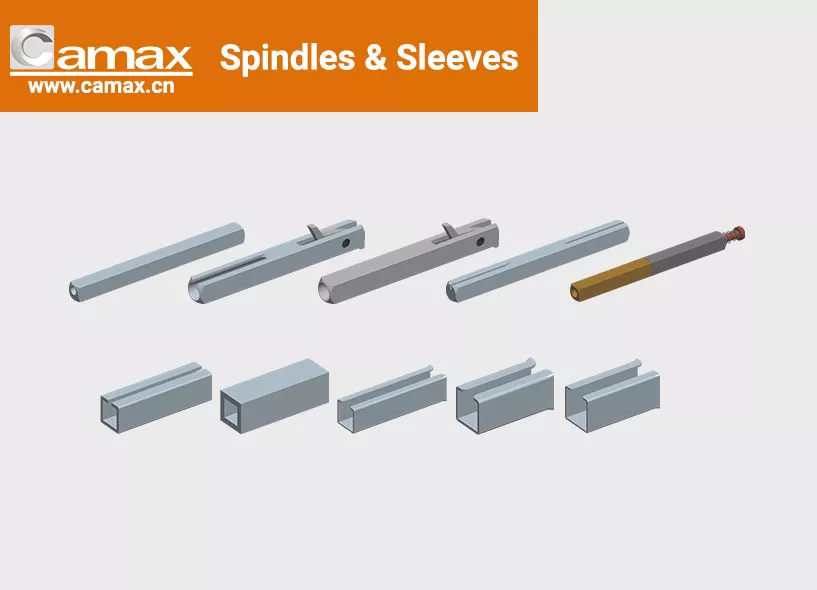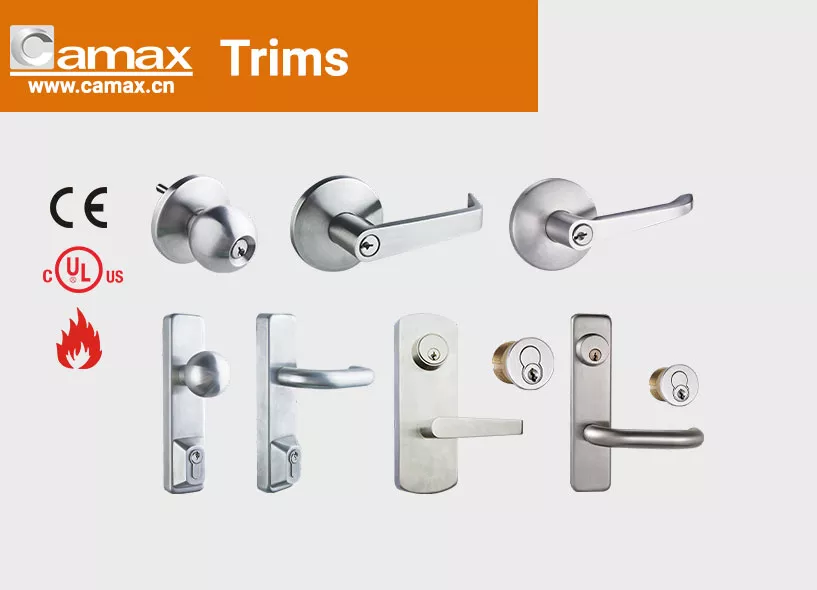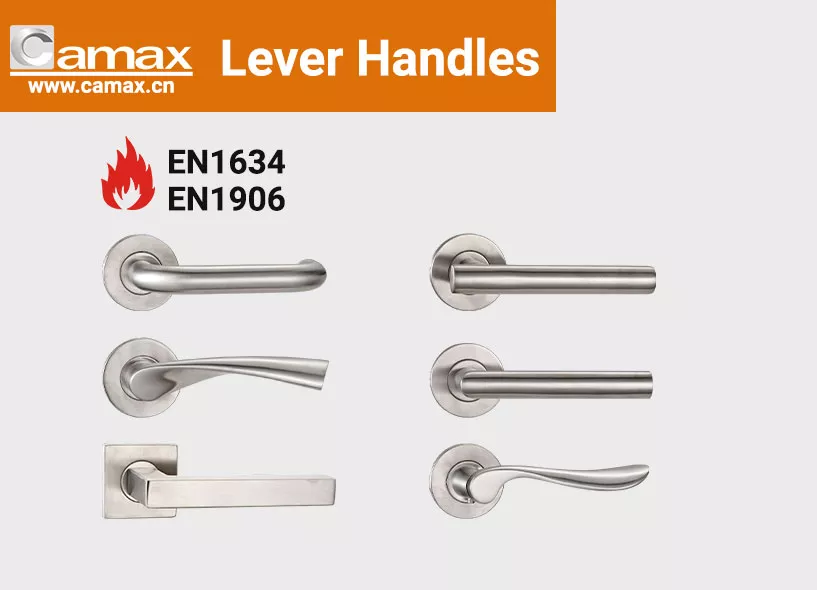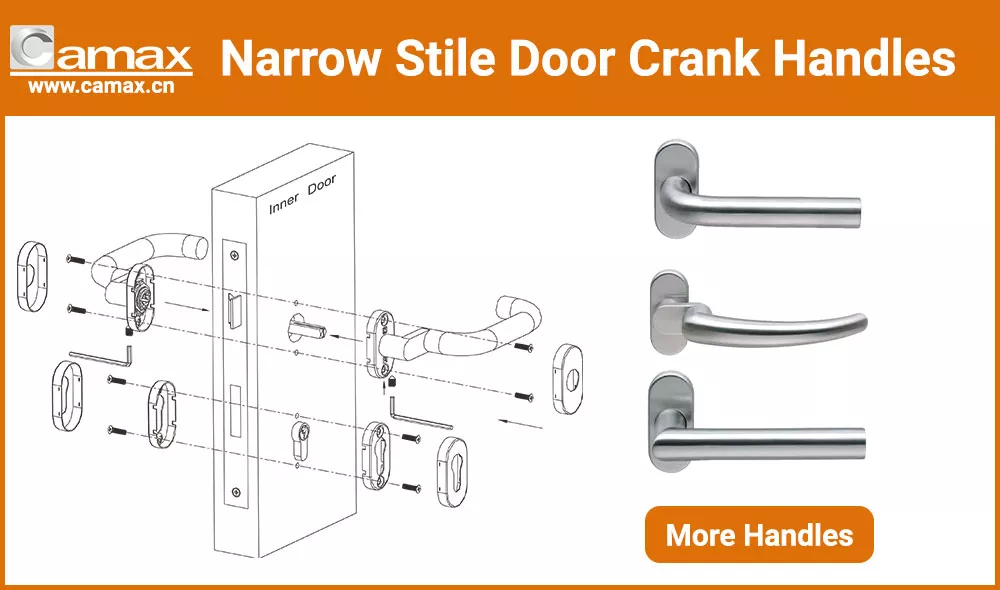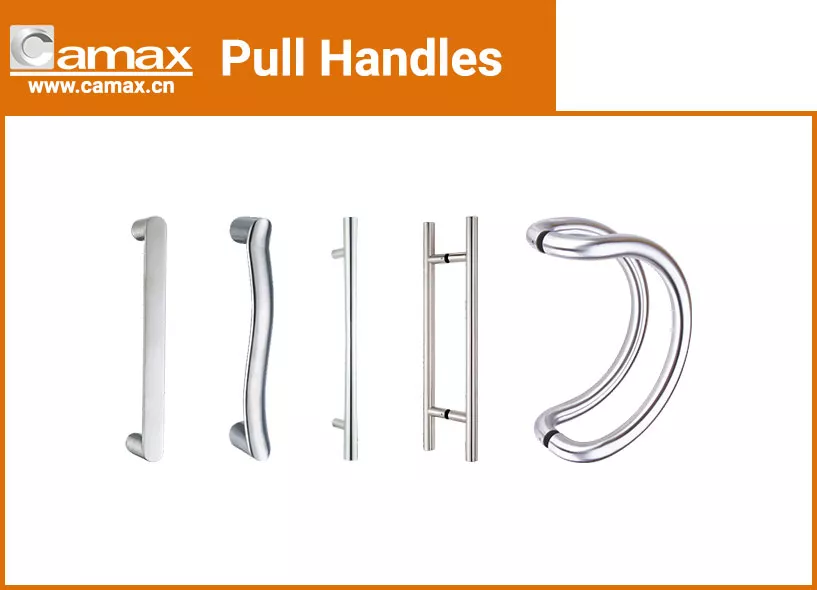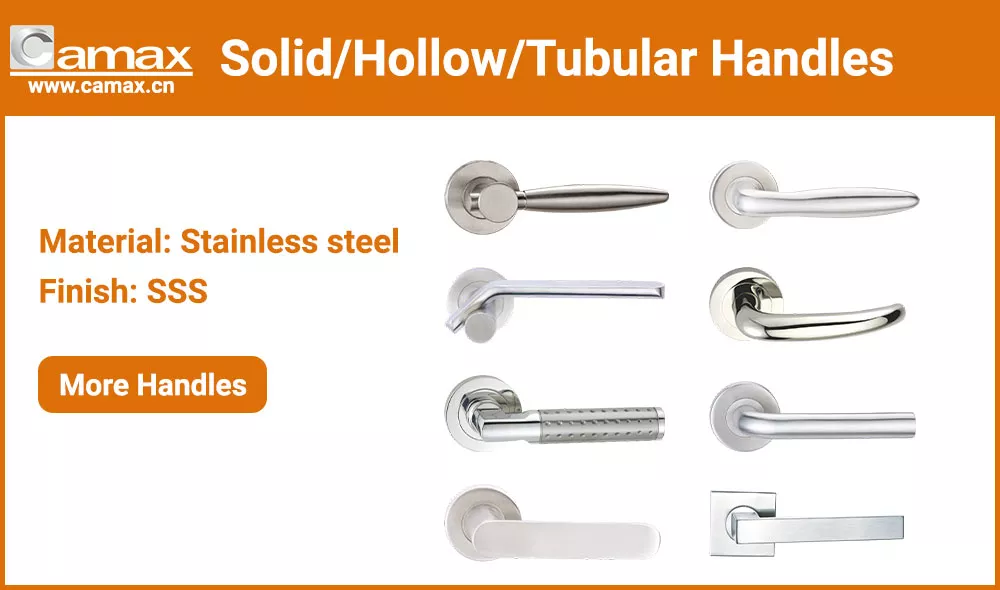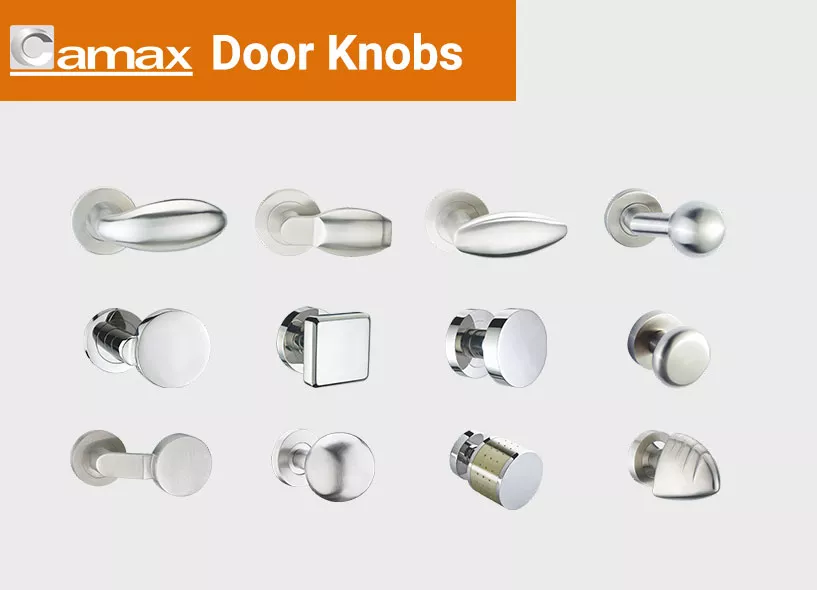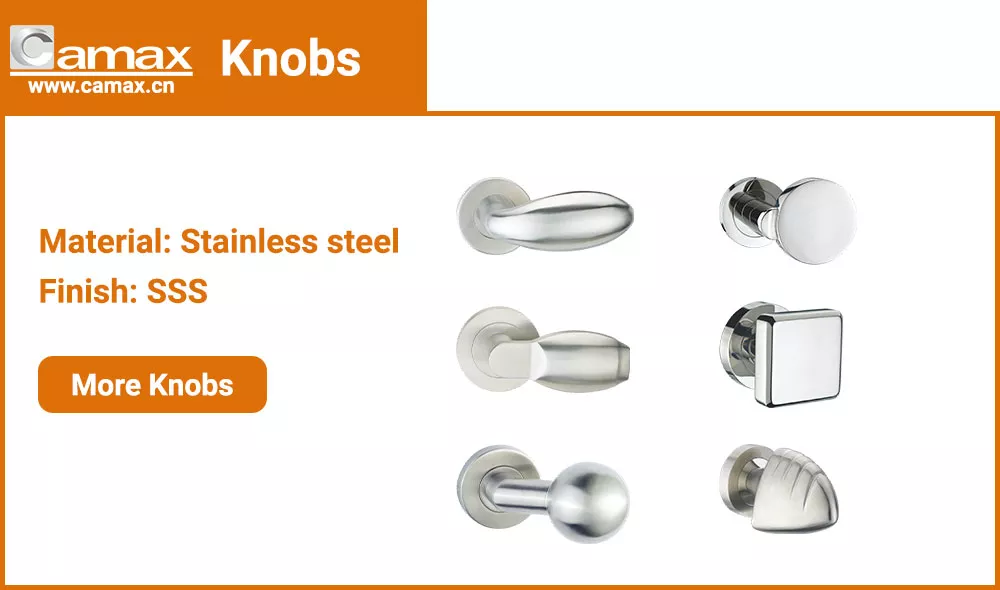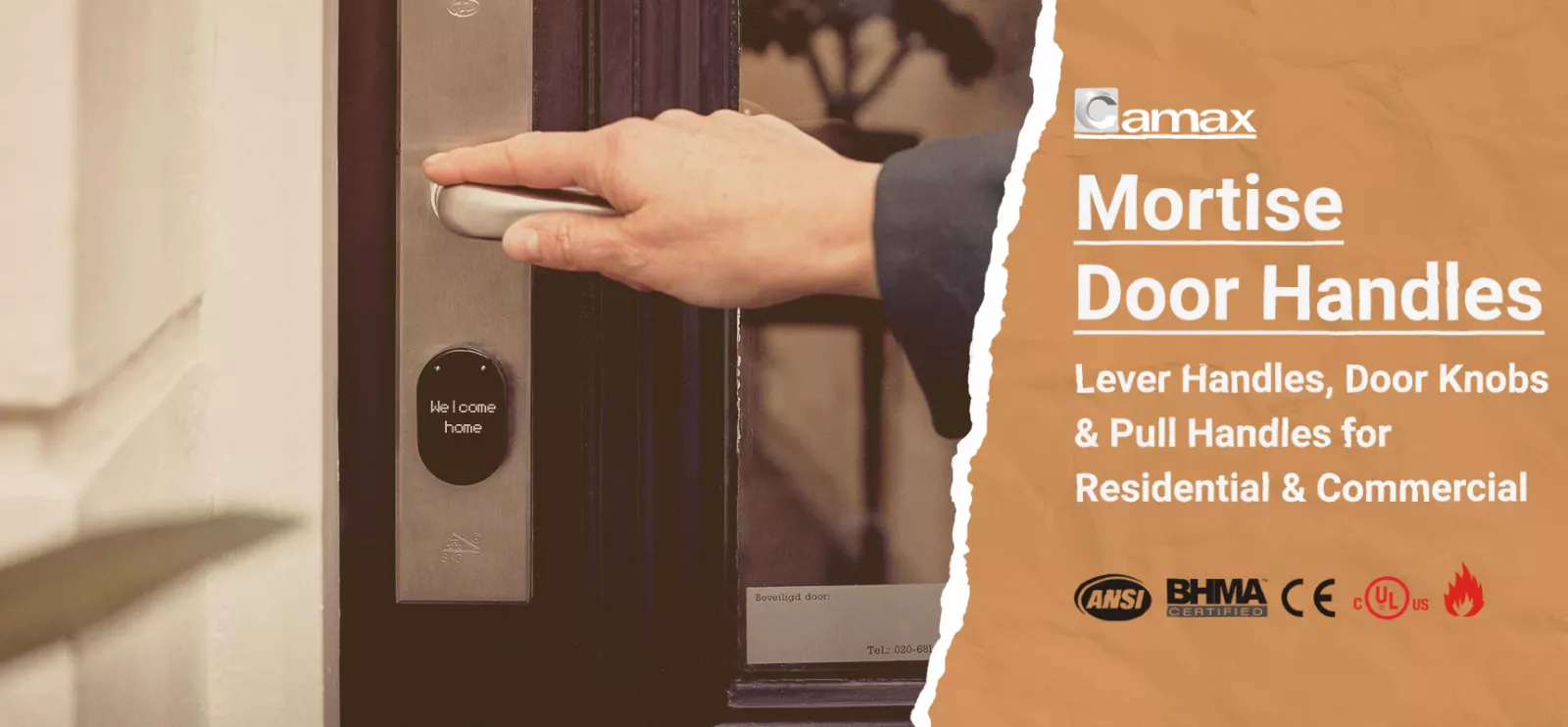
When it comes to door hardware, mortise door handles are a top choice for their exceptional durability, refined elegance, and unmatched versatility. These handles are highly favored for their ability to seamlessly blend functionality with style, making them ideal for both residential and commercial spaces. Mortise door handles are designed to endure frequent use while enhancing the aesthetic appeal of doors, offering a perfect balance of strength and sophistication. Whether you’re upgrading your home or outfitting a commercial property, these handles deliver superior performance. In this article, we’ll explore everything about mortise door handles, including their definition, components, types, and tips for choosing the right one.
Table of contents
What is a Mortise Door Handle?
A mortise door handle is more than just a way to open a door—it’s a thoughtfully designed piece of hardware that brings both style and strength to the table. To make it work, a rectangular slot, or mortise, is carved into the door’s edge to house the lock mechanism. Unlike those standard, surface-mounted handles you might see, a mortise lock with handle caves right into the door itself, giving it a sleek, polished look while boosting security and performance.
At its heart, the mortise system is built from a few key parts: the lock body that slots into the door’s mortise pocket, the handles or levers on both sides, decorative plates or escutcheons, and the bits and pieces that hold it all together. This all-in-one setup is why mortise door hardware is such a go-to for busy commercial spaces like offices or hotels, where you need something tough enough to handle constant use without breaking a sweat.
1. Mortise Door Handles vs. Regular Door Handles – What’s The Difference?
Regular door handles, also known as cylindrical locks, are generally less expensive and easier to install, making them popular for residential applications. However, they lack the robust construction and security features that make mortise systems superior for commercial use. The mortise lock handle mechanism provides multiple locking points, better resistance to forced entry, and significantly longer service life under heavy use conditions.
From an aesthetic standpoint, mortise door hardware offers more design flexibility and a more substantial, professional appearance. The plates can be customized in various finishes and styles, while the handles themselves can accommodate different ergonomic requirements and architectural design preferences.
Tips
The fundamental difference between mortice door handles and standard cylindrical locksets lies in their installation method and internal mechanism complexity. While regular door handles typically require only two holes drilled through the door (one for the handle mechanism and another for the deadbolt), a mortise handleset demands precise mortising of the door edge.
Types of Mortise Door Handles
The beauty of mortise door handles lies in their diversity. No two doors are alike, and neither are the handles that adorn them. From heavy-duty levers certified for intense use to elegant knobs for subtle sophistication, Camax Hardware offers diverse mortise door hardware to suit every preference. Let's break down the main types, highlighting how each can elevate your space.
1. EN1906 Class 4 & Class 3 Door Handles
The EN1906 standard is a European benchmark for door furniture performance, categorizing handles based on usage intensity. EN1906 Class 4 door handles are engineered for extreme durability, tested to withstand over 200,000 cycles—perfect for public venues like airports or stadiums where doors see constant action. These handles feature reinforced spindles and springs that maintain smooth operation even after years of abuse.
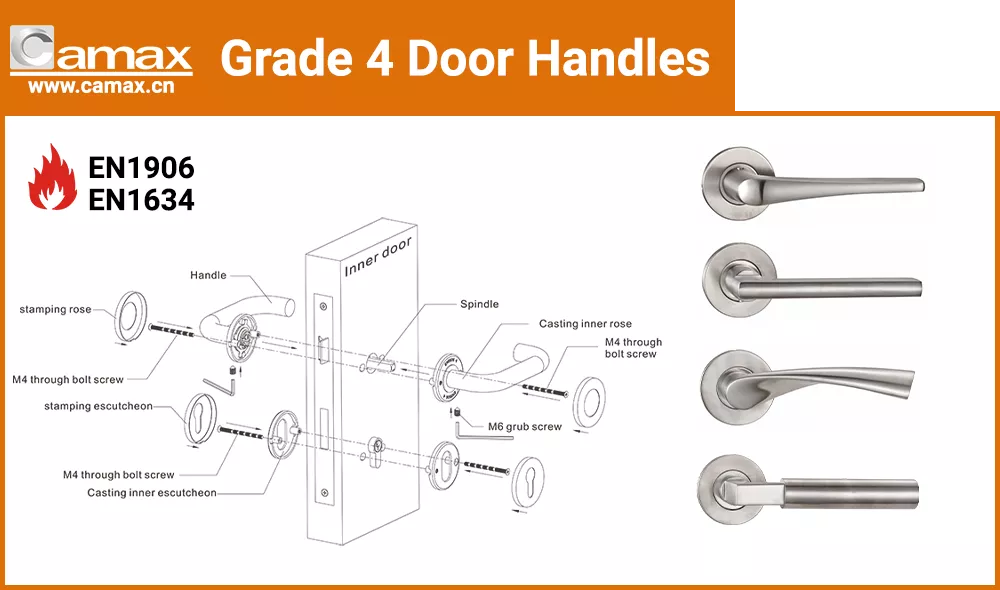
EN1906 Class 3 door handles, while slightly less rigorous (up to 100,000 cycles), are still formidable for offices, schools, or retail stores. At Camax Hardware, our EN1906-rated mortise handlesets come in various lever designs, ensuring they meet both functional and stylistic demands. For example, a Class 4 mortise lock handle might include anti-ligature features for healthcare settings, preventing self-harm risks while providing secure access.
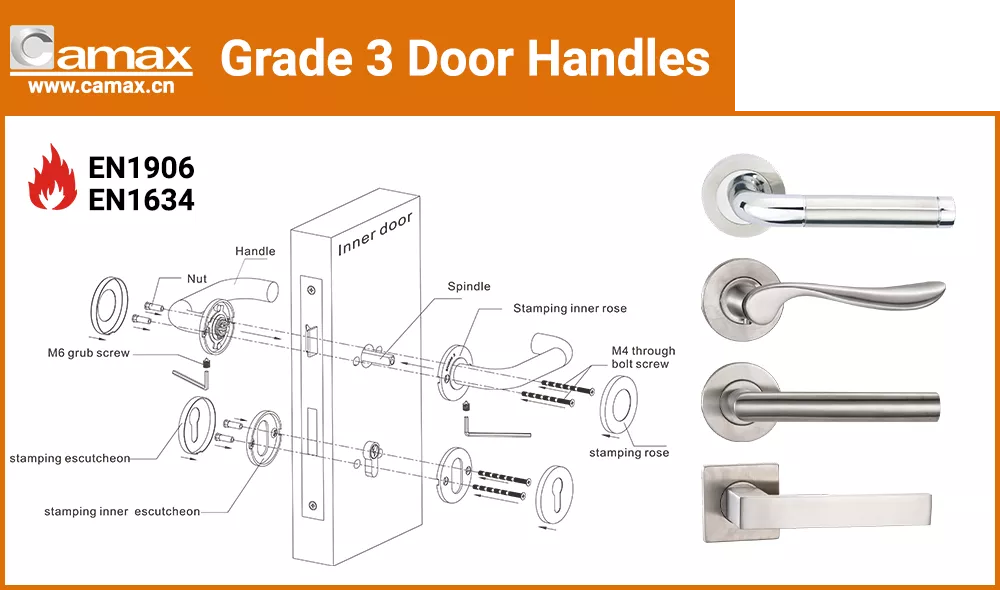
2. Narrow Stile Door Crank Handles
Narrow stile doors, commonly found in aluminum storefront systems and glass entrance doors, require specialized mortise door hardware designed for limited space constraints. These crank handles feature a unique 90-degree operating mechanism that allows for full handle operation even when space is limited.
The narrow stile mortise handleset typically incorporates a compact mortise lock body that fits within the narrow confines of aluminum door frames. Despite size limitations, these systems maintain full security functionality and often include panic egress features required by building codes for commercial applications.
3. More Lever Door Handles
Lever-style mortise handles represent the most popular configuration in commercial applications due to their ADA compliance and ergonomic advantages. The mortise lock with handle in lever configuration provides easier operation for individuals with limited hand strength or mobility challenges, making it essential for public buildings.
Modern lever designs range from contemporary architectural styles to traditional decorative options, allowing architects and designers to specify hardware that complements the overall building aesthetic. Heavy-duty lever mechanisms incorporate return springs and clutch mechanisms that prevent handle droop and ensure consistent operation over millions of cycles.
4. Knobs
While less common in modern commercial applications due to ADA requirements, knob-style mortise door handles still find use in specific applications such as private offices, residential settings, and historical restoration projects where period authenticity is important.
Contemporary knob designs for mortise applications often feature larger diameters and enhanced grip surfaces to improve usability while maintaining the classic aesthetic appeal that some architectural styles demand.
Why Are Mortise Door Handles Preferred in Commercial Spaces?
Commercial buildings experience significantly higher door usage than residential properties. A typical office building entrance may see thousands of operations daily, while interior doors in busy facilities can experience hundreds of cycles. This kind of commercial door handles enable them to withstand this intensive use without degradation in performance or security.
Exceptional Durability: Commercial buildings experience intensive door usage, with entrance doors seeing thousands of daily operations. The robust construction of mortice door handles withstands this heavy use, distributing stress across a larger mechanism area and reducing component wear.
Superior Security: The entrance mortise lockset provides enhanced protection through multiple locking points, pick-resistant cylinders, and reinforced components. These systems easily integrate with electronic access control, offering keyless entry and audit capabilities essential for modern security management.
Code Compliance: Mortise lock handles meet stringent building requirements for egress, accessibility, and fire safety. Their flexibility allows easy reconfiguration as regulations evolve, providing future-proofing that justifies initial investment costs.
Professional Appeal: The substantial feel and smooth operation of quality mortise handlesets convey professionalism and attention to detail. This enhances the building's aesthetic appeal and user experience, reflecting positively on business operations while ensuring reliable performance in demanding commercial environments.
FAQs About Mortise Door Handles
1. What Makes a Good Mortise Door Handle?
A good mortise door handle combines functionality, security, and design to meet both practical and aesthetic needs.
Durability is key, with handles made from high-quality materials like stainless steel or brass, ensuring long-lasting performance.
Security features such as anti-pick, anti-drill, and anti-snap protection offer peace of mind, safeguarding against tampering and break-ins.
The design should complement the door and the overall décor of the space, adding to the room’s style.
A reliable mortise handle meets industry certifications like EN1906, which guarantees that it performs well and maintains the highest standards of quality and safety.
2. How Do Mortise Door Handles Differ by Region?
Mortise door handles come in different designs and specifications based on regional standards, ensuring compatibility with local lock systems.
ANSI (American) mortise door handles are typically larger and are designed to work with ANSI mortise locks, commonly found in North American commercial buildings. These handles offer robust security and durability for high-traffic areas.
On the other hand, Euro mortise door handles are designed for Euro mortise locks and feature a slimmer, more compact profile. They are widely used in European countries and are also favored for residential applications worldwide. Euro handles offer a sleek, modern look while maintaining high functionality and security.
3. Are Mortise Door Handles Suitable for Older Doors?
Yes, mortise door handles can be installed on older doors, provided the door has the necessary depth to accommodate the mortise lock. If not, modifications may be required to fit the lock body securely.
4. Can I Replace a Cylindrical Lock with a Mortise Handle?
Replacing a cylindrical lock with a mortise handle is possible, but it requires careful attention to detail. The door needs to be modified to create a specific mortise pocket that fits the lock and handle system. This is a job that typically requires precision, so it’s a good idea to hire a professional who has experience with such installations. Proper installation ensures that the mortise lock functions correctly, providing the security and durability you need without any issues. A skilled professional will make sure everything aligns perfectly, giving you peace of mind with your new hardware.
Contact Camax to Discover The Right Mortise Door Handles for Your Project
Understanding the various types and applications of mortise door handles is essential for anyone involved in commercial construction or building management. From the heavy-duty performance of EN1906 Class 4 handles to the space-saving design of narrow stile systems, mortise hardware offers solutions for virtually every commercial door application.
At Camax Hardware, we specialize in providing premium mortise door handle solutions for commercial applications. Our expert team can help you select the right hardware configuration for your specific requirements, ensuring optimal performance, security, and aesthetic appeal.
Contact Camax Hardware to discuss your project requirements.
Need help? Contact Camax for a quote!
Discover Camax's door & window hardware with ANSI/BHMA/UL/CE certification today!



